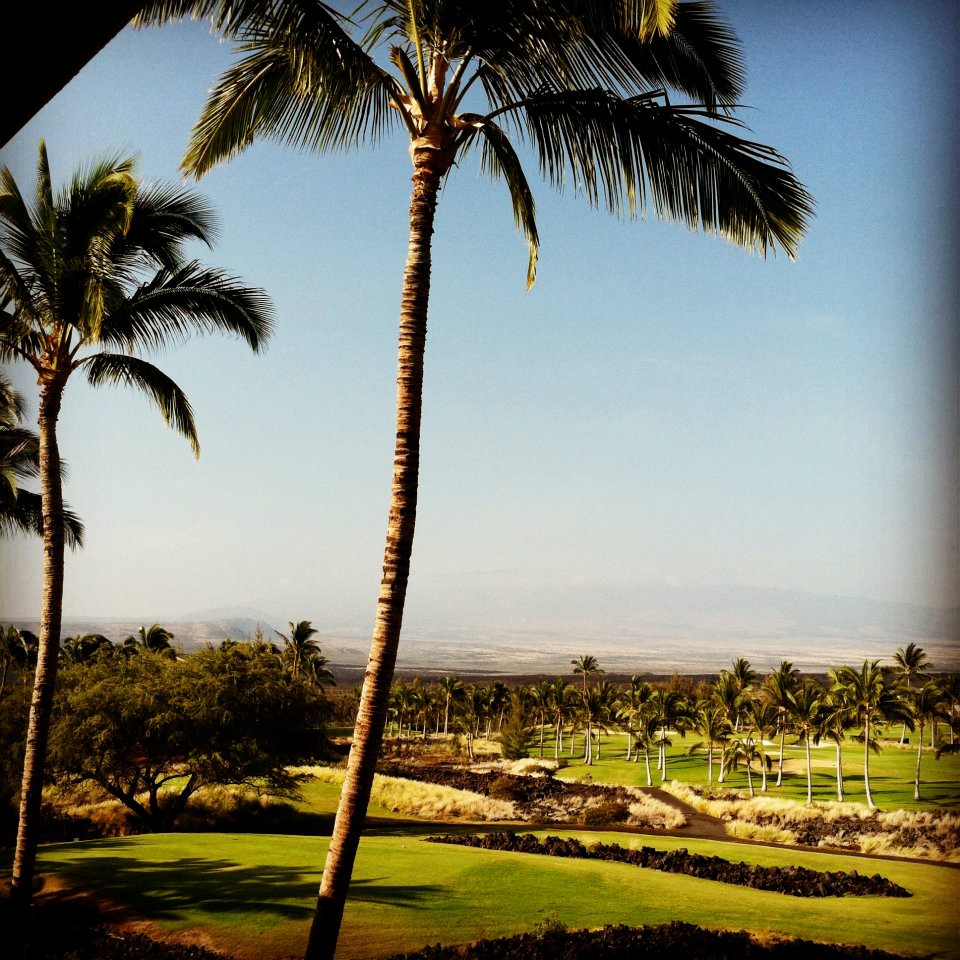The Big Island … and still growing
The first thing you notice as you descend is that the island is cloaked in black, unlike the lush green layer carpeting the others.
The lady sitting next to me on the plane asked her husband, “So is that all like, mountain, like, rock?”
“It’s lava rock, honey,” he said.
And the whole island is covered in it.
In some areas, it’s all that the land is made up of: Centuries-old hardened lava. In fact, the Big Island, which is the youngest of the Hawaiian islands, is not only big, but still growing, thanks to Kilauea, the active volcano to which it plays home.
I wondered as we flew into Kona airport how I hadn’t noticed that pervasive blanket of black on previous trips to the Big Island. The airport landing strip itself has been placed over a bed of lava rock.
Driving from Kona to Waikoloa where we were staying, the black banked both sides of the road, sprouting light brown grasses and plants here and there and an occasional tree. It’s both dismal and, ironically, chilling, when you see the layers and layers of hardened lava, in some areas forming coiled patterns so you can vividly imagine how a river of molten lava gushed from Kilauea down the mountain’s slopes. The roads have merely been carved into the river’s former path, but what’s to stop Hawaiian fire goddess Pele´from burying that road in her cape of magma once more?

That’s what makes visiting the Big Island so exciting— each time, it has changed. There are new lava flows, new rock formations, new stories of what it tore down in its path.
It was almost 6 o’clock by the time we picked up some basic groceries and finally reached the condo, so there wasn’t much sightseeing I could do, but the next few days held the promise of excursions to tropical coves and hikes across primordial terrain. For now, I put my feet up and stretched out on the lanai, enjoying the lilt of coconut trees and the thousands of miles that separated me from my reporter’s notebook.

2 Comments
Comments are closed.














[…] From the skies, the dynamics are clear: although frozen, this landscape of the ice field has been anything but still. The ice field is 3,000 years old, but here the ice remains young because it constantly replenishes itself. Coils and deep crevasses indicate that the glaciers in these valleys are on the move (and ironically, reminded me of the serpentine folds trapped in the hardened lava rock of Hawaii). […]
[…] From the skies, the dynamics are clear: although frozen, this landscape has been anything but still. The field is 3,000 years old, but here, the ice remains young because it constantly replenishes itself. Coils and deep crevasses indicate that the glaciers in these valleys are on the move (and ironically, reminded me of the serpentine folds trapped in the hardened lava rock of Hawaii). […]